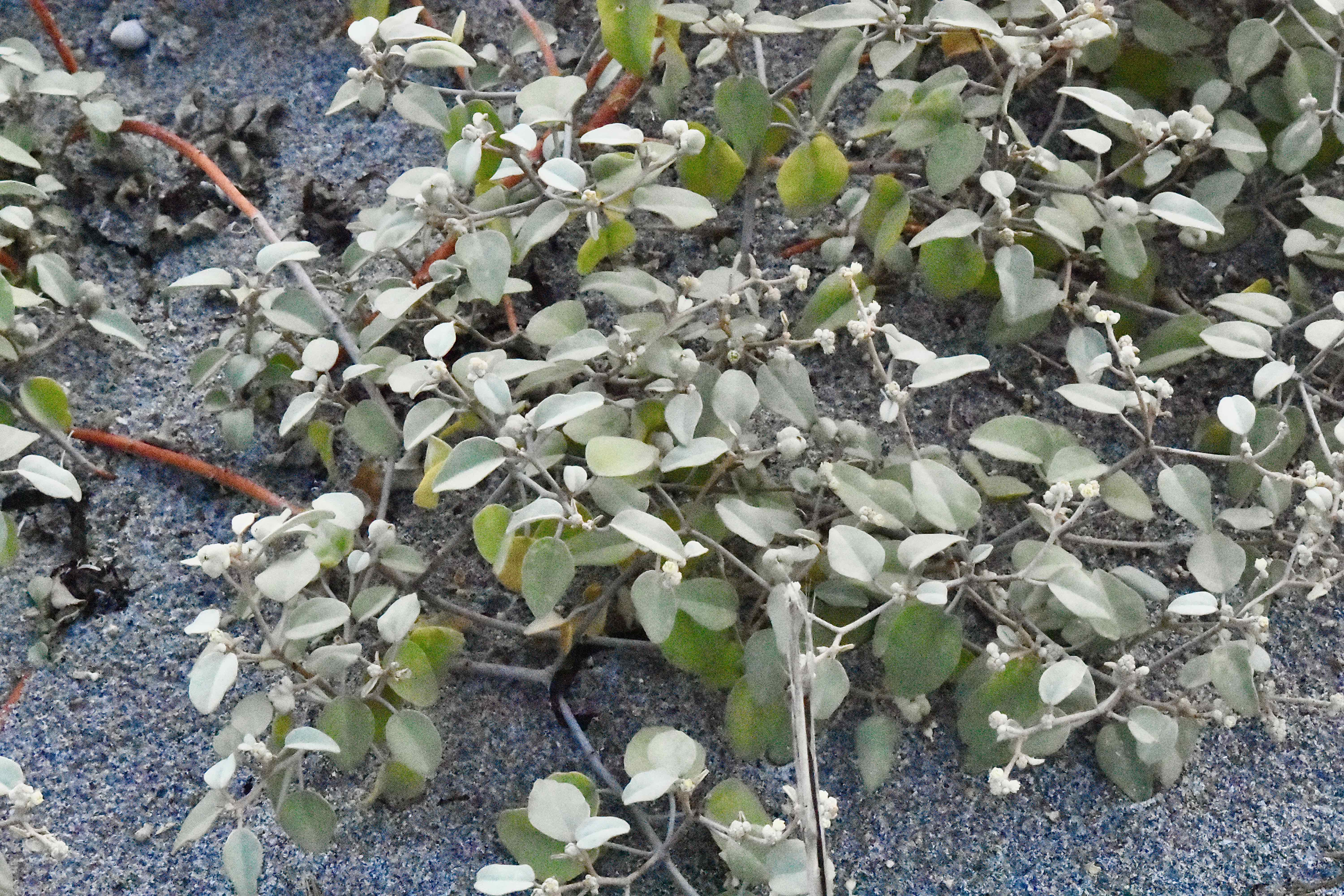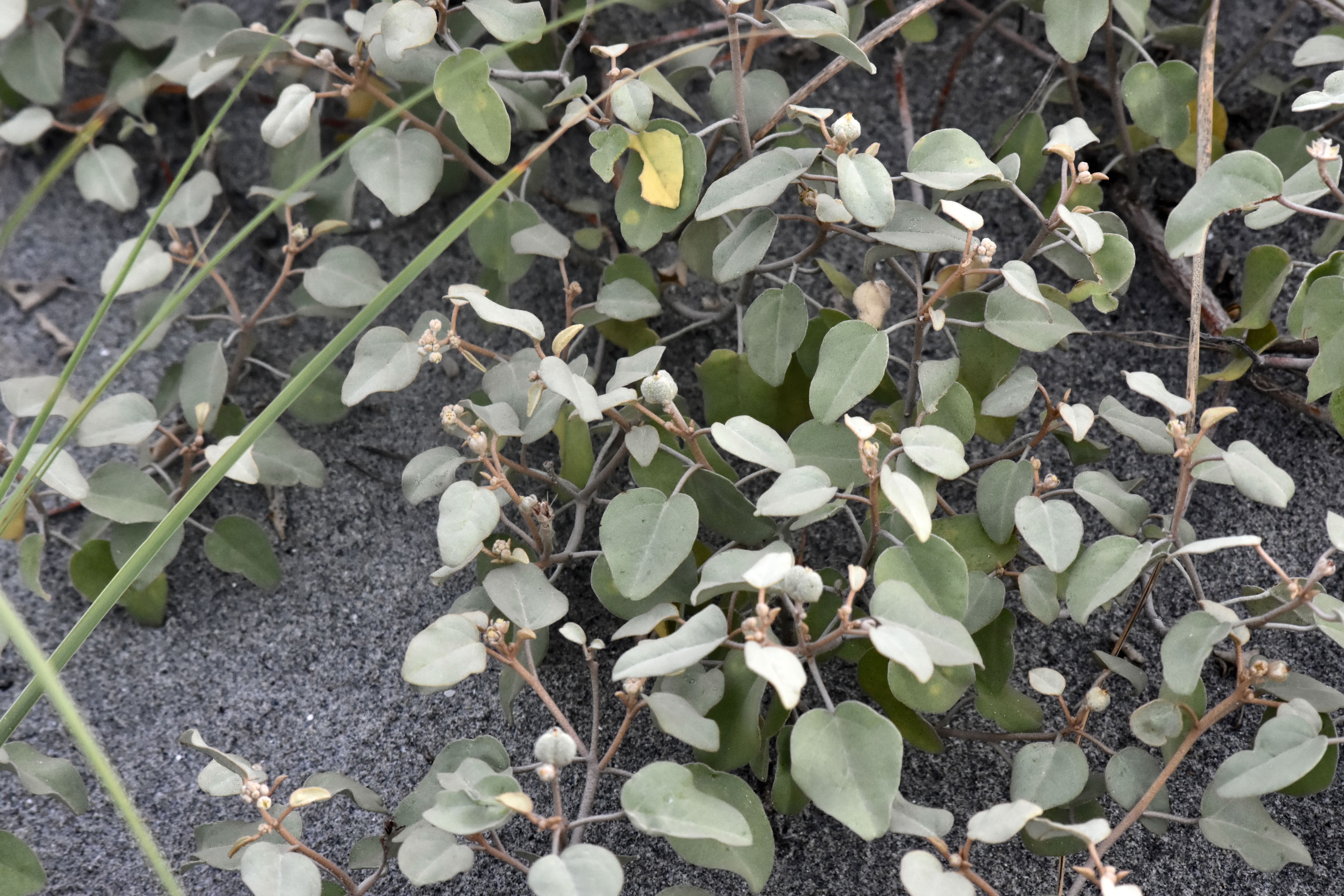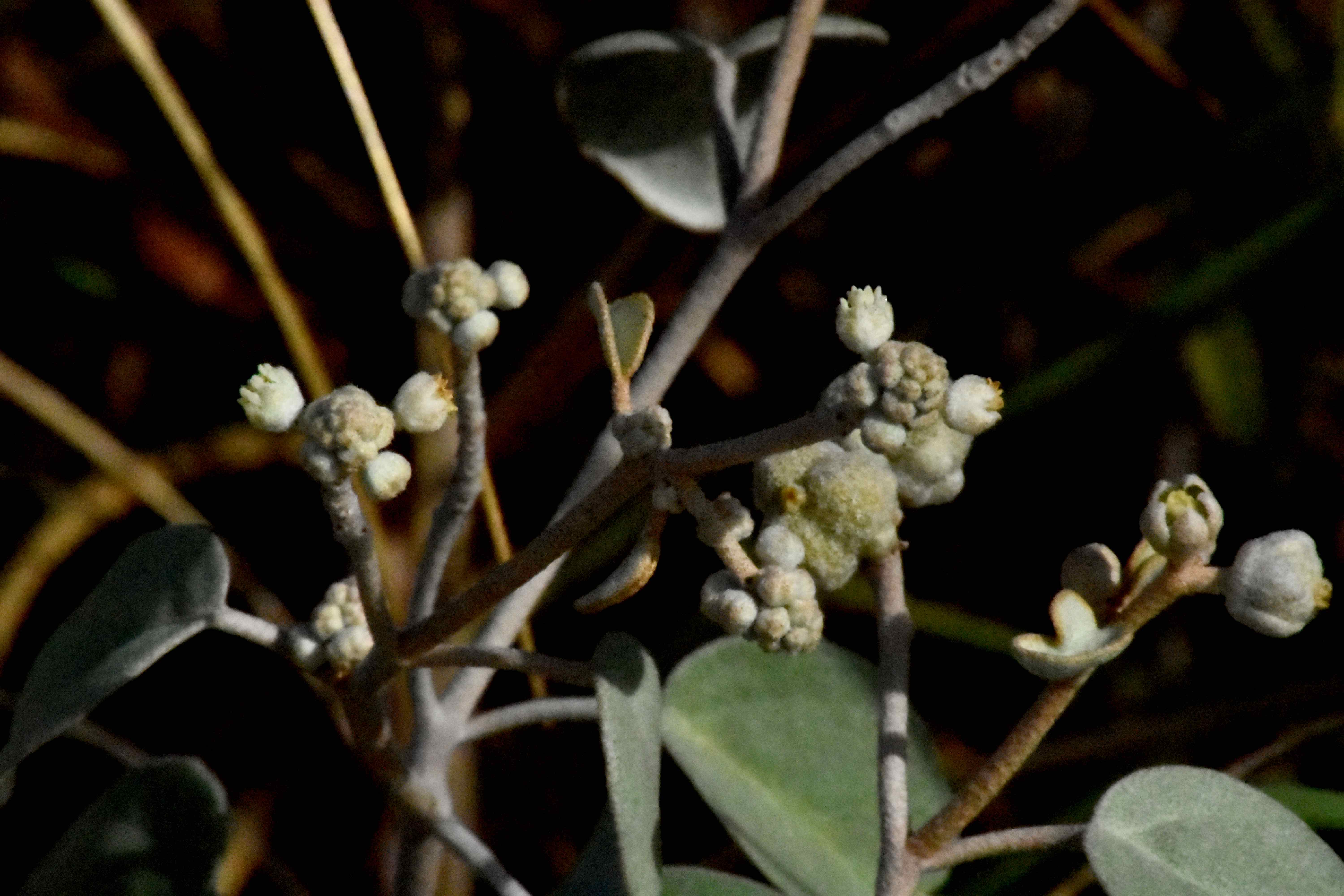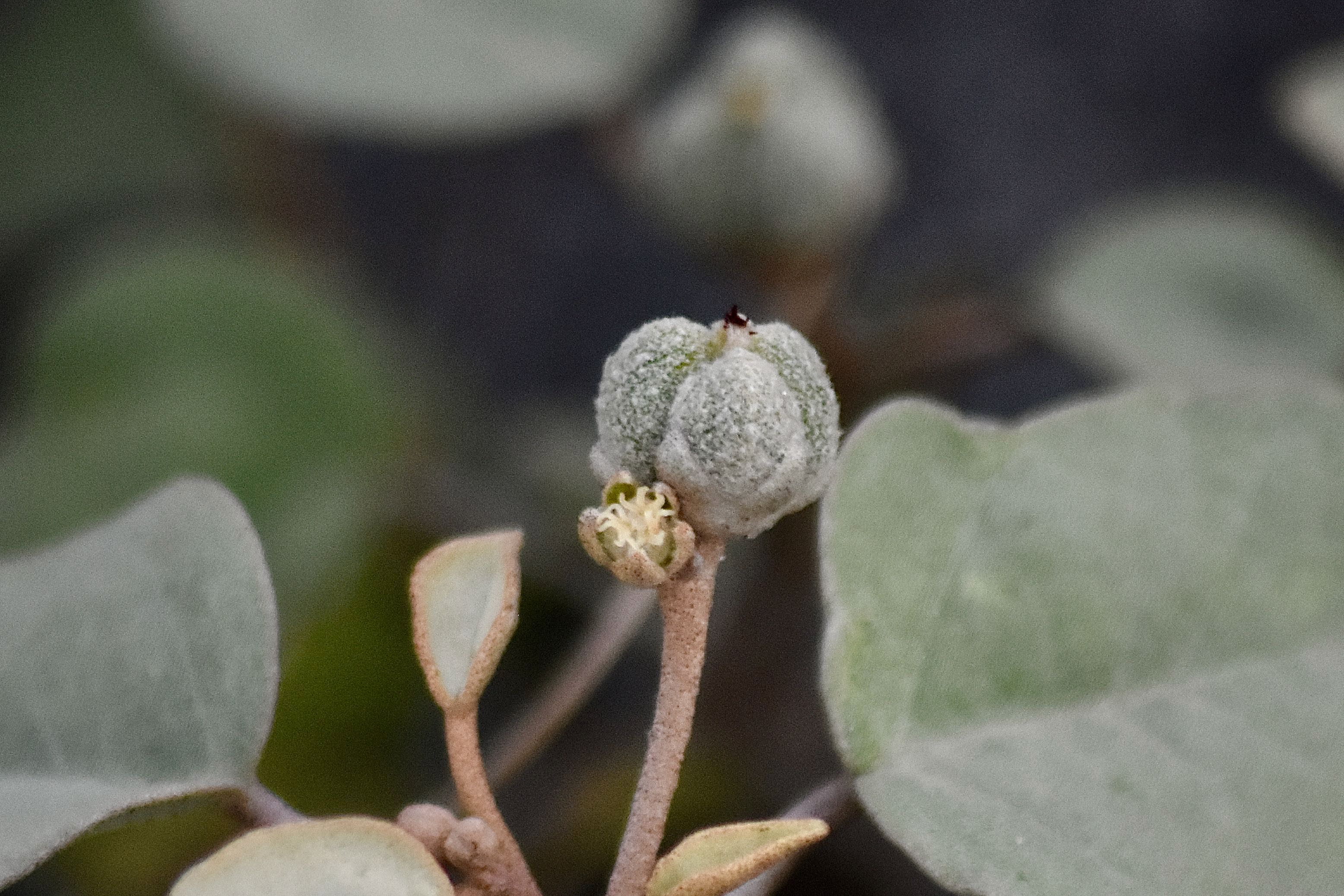
Beach tea, photographed at Atlantic Dunes Park, Delray Beach, Palm Beach County, in Sept. 2016
Despite the name, beach tea isn’t something that you’d want to use to brew a hot beverage. Known scientifically as Croton punctatus, beach tea grows in coastal dunes and strands along Florida’s Atlantic Coast and most of the Gulf. It is a Florida native but is considered rare, despite having an extensive geographic range.
So it lives up to at least the first half of its common name. The inspiration for the second half is uncertain, though the theory is that someone, somewhere within its extended range probably used beach tea medicinally for reasons seemingly lost to history. During our research, we couldn't find a single reference where beach tea has been used either as food or as medicine.
Beach tea is a small, dense shrubby plant that grows in dunes well above the high tide line. It stands one to three feet tall, with a spread of three or four feet. It has dull green, almost silvery, leaves that are somewhat elliptically shaped and come to a sharp point at the apex, or tip. The flowers are white, lack petals and generally lacking in eye appeal. They are fragrant, however. In South Florida and points south, beach tea blooms year-round; in cooler climes, it blooms in spring and summer. One other note: beach tea plants have both male and female flowers, the male appearing toward the top and females toward the bottom.
Its range extends along the Gulf Coast as far west as Texas. It's also found in Mexico, Central America and the "shoulders" of South America. One oddity: The U.S. Department of Agriculture's PLANTS database also includes several counties in southeastern Pennsylvania along the Delaware River as part of beach tea's range. However, most likely its presence there is transient, the result of some sort of accidental transport by a ship.
As might be expected given its coastal dune habitat, beach tea prefers full sun, grows in nutrient-poor soils and is drought tolerant. It does not tolerate flooding from salt water, but it will take salt wind.
It is a cultivated plant, used mainly for natural landscapes and restorations, but it’s also used as a specimen or accent plant and as a ground cover. It is a short-lived perennial, but tends to live longer in drier locations.
Beach tea is a member of Euphorbiaceae, the poinsettia family. Other common names include gulf croton and silverleaf croton. It’s also spelled beach-tea.
Atlantic Dunes Park
So it lives up to at least the first half of its common name. The inspiration for the second half is uncertain, though the theory is that someone, somewhere within its extended range probably used beach tea medicinally for reasons seemingly lost to history. During our research, we couldn't find a single reference where beach tea has been used either as food or as medicine.
Beach tea is a small, dense shrubby plant that grows in dunes well above the high tide line. It stands one to three feet tall, with a spread of three or four feet. It has dull green, almost silvery, leaves that are somewhat elliptically shaped and come to a sharp point at the apex, or tip. The flowers are white, lack petals and generally lacking in eye appeal. They are fragrant, however. In South Florida and points south, beach tea blooms year-round; in cooler climes, it blooms in spring and summer. One other note: beach tea plants have both male and female flowers, the male appearing toward the top and females toward the bottom.
Its range extends along the Gulf Coast as far west as Texas. It's also found in Mexico, Central America and the "shoulders" of South America. One oddity: The U.S. Department of Agriculture's PLANTS database also includes several counties in southeastern Pennsylvania along the Delaware River as part of beach tea's range. However, most likely its presence there is transient, the result of some sort of accidental transport by a ship.
As might be expected given its coastal dune habitat, beach tea prefers full sun, grows in nutrient-poor soils and is drought tolerant. It does not tolerate flooding from salt water, but it will take salt wind.
It is a cultivated plant, used mainly for natural landscapes and restorations, but it’s also used as a specimen or accent plant and as a ground cover. It is a short-lived perennial, but tends to live longer in drier locations.
Beach tea is a member of Euphorbiaceae, the poinsettia family. Other common names include gulf croton and silverleaf croton. It’s also spelled beach-tea.
Atlantic Dunes Park



